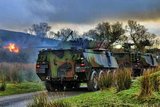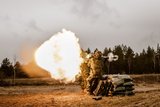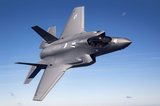America's 'provocative' Korean military drills
US President Donald Trump's shock decision to suspend ‘war games’, announced after his summit with Kim Jong Un, has left allies scrabbling for a response and seemingly handed Pyongyang a major concession.
North Korea has long sought an end to joint military exercises between US and South Korean forces, condemning them as a rehearsal for invasion, and conducting its own counter-drills and missile tests in response.
Tensions with Pyongyang inevitably escalate during the drills, which Washington and Seoul have long insisted are ‘defensive’ in nature.
In a free-ranging press conference after his extraordinary summit with the young North Korean leader, Trump told reporters in Singapore he would end the ‘provocative’ joint exercises, aping language that Pyongyang has long employed.
Seoul and Tokyo appeared to have been caught off-guard by the announcement.
Japanese Defence Minister Itsunori Onodera said on 13 June the drills were ‘vital’ to regional security, and US Secretary of State Mike Pompeo insisted that suspension of the drills was contingent on productive negotiations in ‘good faith’.
There is a precedent for stopping the drills. Joint exercises were halted in the 1990s during talks aimed at curbing Pyongyang's nuclear ambitions.
Here is a look at the main joint exercises:
Key Resolve is a computer-simulated war game conducted by military commanders which usually begins in March and runs for about 10 days.
It always accompanies Foal Eagle, one of the world's largest field drills.
More than 200,000 South Korean and some 30,000 US soldiers – including thousands flown in from abroad – participate in the two-month Foal Eagle exercises.
This year's drills were delayed to avoid clashing with the Pyeongchang Winter Games in South Korea.
Pyongyang sent athletes, cheerleaders and the North Korean leader's sister Kim Yo Jong to the Olympics, starting a diplomatic thaw that culminated in the recent US-North Korea summit.
Foal Eagle was cut short afterwards by a month to maintain the rapprochement.
Max Thunder is a massive air force drill that usually lasts two weeks.
In 2018, the two allies conducted Max Thunder in May, mobilising some 100 aircraft including advanced US F-22 fighter jets, which are feared by the North for their radar-avoiding and precision strike abilities.
Pyongyang strongly protested the drills, threatening to cancel its planned summit with the US and postponing a scheduled military meeting with Seoul.
This two-week drill usually starts in August and although it is largely a computerised command-and-control exercise, Pyongyang considers it a highly provocative rehearsal for invasion.
Following 2017's drills, the North fired ballistic missiles over Japan, triggering global alarm and a furious response from Tokyo.
More from Defence Notes
-
![Canada set to look away from its neighbour and across the Atlantic for partners]()
Canada set to look away from its neighbour and across the Atlantic for partners
While non-EU UK struggles to join the Security Action for Europe initiative, which provides loans for defence programmes, Canada has become the first country outside Europe to get access – and did so for a nominal fee.
-
![NATO experiments with solutions to integrate networks, AI and uncrewed systems]()
NATO experiments with solutions to integrate networks, AI and uncrewed systems
During the latest edition of the NATO DiBaX, the alliance tested multiple capabilities to inform requirements for future efforts.
-
![Leonardo unveils plans for Michelangelo air defence dome]()
Leonardo unveils plans for Michelangelo air defence dome
The new multi-layered defence system will harness AI to neutralise airborne threats and protect Europe from Russian aggression.























